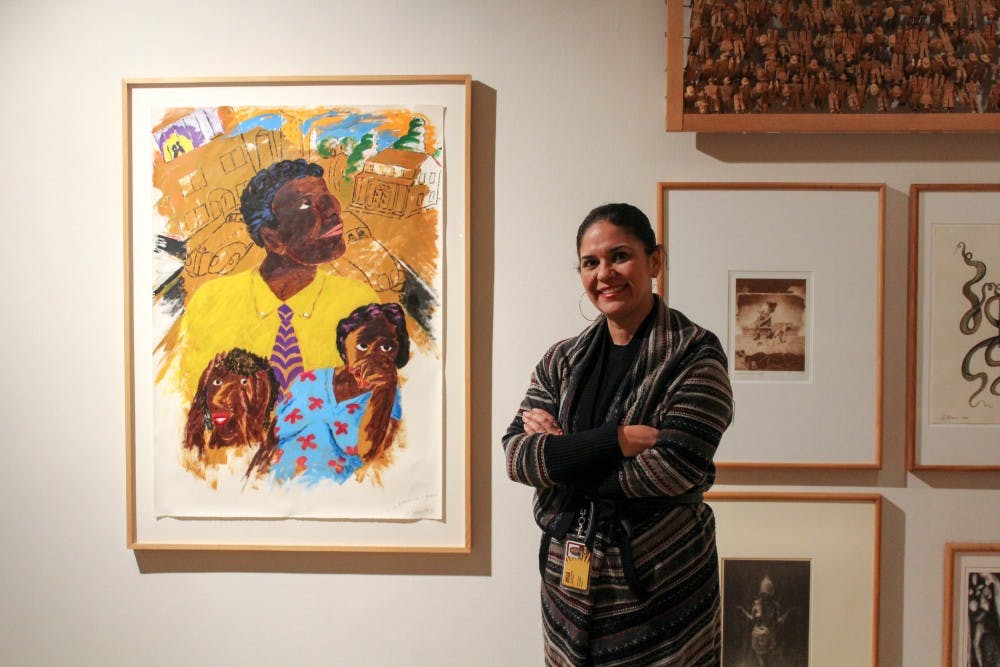Since Miki Garcia took over the position of director of the ASU Art Museum in December 2017, she said she has been working to redefine the purpose of museums while continuing the ASU legacy of innovation and inclusivity.
Garcia said she wants to make the museum-going experience more informal and appealing to the ASU community and showcase the museum's permanent collection, established in 1950 with a donation from Oliver B. James, more frequently.
She also said she would like to potentially loan parts of the collection to other museums, universities and community colleges as a way of networking so that more people will be able to see the work.
“Part of our job is to create networks with other institutions that are doing work to serve different communities,” Garcia said.
Garcia and other museum directors from across the country talk about what a museum means to them.
In addition to showcasing its permanent collection, the ASU Art Museum hosts traveling exhibits and invites guest curators to discuss topics, like with a recent show exploring different definitions of the American Dream.
“One thing I’ve really been interested in as a museum leader is thinking about museums as transformative spaces," Garcia said. "I want everyone to be able to be transformed by the power of the arts."
Garcia credited her father's involvement in the Chicano Civil Rights Movement and her exposure to Latin American art at a young age as the main reasons why she is passionate about social issues. She also emphasized the importance of a museum's role as a place to have informal conversations about these issues.
“Often times, museums only think of strategies in terms of what's on the wall in the galleries, but they have the power to do so much more,” she said.
Garcia hopes to establish collaborations with other museums like the one between the Los Angeles County Museum of Art and the Vincent Price Art Museum in California.
“The director of the Vincent Price Art Museum, Pilar Tompkins (Rivas) is one of my very dear friends," Garcia said.
She and Tompkins Rivas both want to make sure their museums are accountable to their respective communities, Garcia said.
Garcia said a decreasing number of people are frequenting museums because people have come to expect interactive experiences because of the prevalence of technology.
“I think museums have this stigma where people see them as very uppity. It's very upper class,” said X-Avier Corrales, a museum student ambassador and graduate student studying secondary education. “They're not just places for rich people to talk about Rembrandt for hours.”
Garcia also said there is a lack of interest from a lot of young people and people of color because art museum’s and art in general are wrongfully seen as exclusive.
She said it's important to make sure the art displayed at museums represents different cultures, and that they represent their communities in the way they hire, market themselves and engage the community.
Garcia said being inclusive and engaging sounds simple, "however, if we look at the way museums have been doing things, we can see that it’s actually really radical."
In 2010 the Center For The Future of Museums reported that the majority of museum leaders and museum patrons in the U.S. are white.
She believes the way museums engage their communities is unsustainable long term. She plans to host monthly events to engage the community and address this issue.
Garcia also said she wants to incorporate live performances and family-oriented events to invite the community to the museum.
Tiffany Ana Lopez, director of the School of Film, Dance and Theatre, said Garcia understands the value of art and its role in society.
“We are lucky to have her. She’s been actively inviting all the directors of the Herberger Institute to be partners in thought,” Lopez said. “She wants to teach the community to value art through community engagement and is having important conversations.”
Reach the reporter at jicazare@asu.edu or follow @sonic_429 on Twitter.
Like State Press on Facebook and follow @statepress on Twitter.




